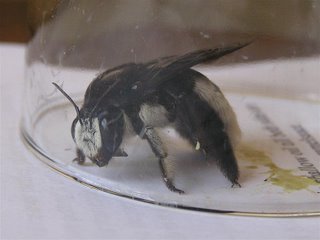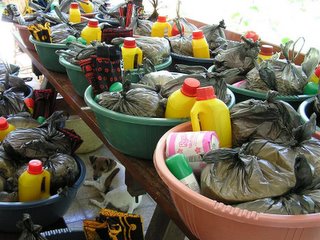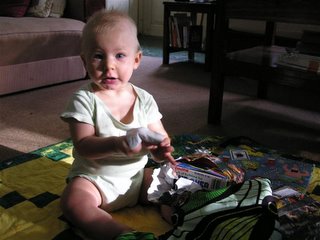
There I was minding my own business, digging through one of my storage boxes for a bar of soap or some such thing when my eye caught something out of the ordinary. It was the second largest spider that I have ever seen without the benefit of a barrier of some kind to protect us from each other. I was thankful that I saw it before I put my hand on it – yikes! It was doing its utmost to make itself very small in order not to be seen amongst some first aid supplies. Given its bulk, it wasn’t doing a very good job and even all curled up on itself, it was the size of a small mouse. Yes, it was furry too.

“I’m sorry,” I addressed the spider, “but this will not do. You’re going to have to go.” I give this explanation to all the creatures that I will not tolerate in my living space. This includes any spider bigger than the local daddy long legs and all the winged creatures with a sting – mosquitoes, bees, wasps… I do tolerate the crickets, frogs, gekos, (most) ants and all the weird little things that throw themselves at my kerosene lamps throughout the evening when they’re lit. Anyway, I fetched the can of evil smelling DOOM (that is the high-powered local version of RAID to all you North Americans) and gassed the poor creature with several blasts. DOOM gives me a headache and causes almost instant death to smaller insects but anything larger than a housefly is usually only initially stunned by the gas and then tends to thrash around for a while before giving up and keeling over as the poison affects their nervous system. Often enough, I will “finish off” an intruder with a swat from a handy shoe or newspaper after the stunning blast in order to conserve the gas, my health and to put the creature out of its misery.

As I said, this spider was rather large and the blast of DOOM caused it to briefly curl up even tighter as if it was trying to avoid the spray but then I watched as it suddenly stretched to its fullest (very alarming) diameter and back to the original crouch and then started thrashing around the stuff in my box. I was a little worried that I hadn’t thought through how I was going to get the spider out of the box and what I was going to do if it decided to try to hide itself away…I had subjected other smaller spiders to DOOM-ing that had lived for a day or more afterwards. I couldn’t monitor the box all day but what if it decided to go and die elsewhere in the house? I was not going to be able to be comfortable with this thing roaming freely and liable to turn up anywhere. The beast very graciously climbed into an open box of sticky bandages (plasters for all you Brit-trained English speakers) and solved my problem with how to wrangle it out of my house. As it thrashed inside the box it made the most alarming amount of noise for a spider in a box but I plucked up my courage enough to close the lid of the box and carry it outside to dump out the spider and the rest of the contents into my garden. The fall stunned the creature again and as it was lying on its back recovering, I collected the bandages that had fallen around it. I watched as it righted itself, staggered a little and then resolutely made its way back towards my house. That was when I decided that the game was up and smacked it with a slipper. One leg was left behind when I swept the remains back into the garden so I did a post mortem collection of data. The four distinct sections of the leg added up to a whopping length of 3.4cm and at its widest it was 3mm across with a clearly defined muscle where it was attached to the body of the beast. As earlier stated, any interested bug researchers are more than welcome!






